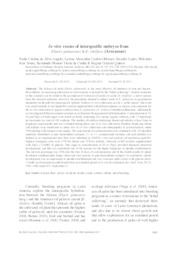In vitro rescue of interspecific embryos from Elaeis guineensis x E. oleifera (Arecaceae).
In vitro rescue of interspecific embryos from Elaeis guineensis x E. oleifera (Arecaceae).
Author(s): ANGELO, P. C. da S.; MORAES, L. A. C.; LOPES, R.; SOUSA, N. R.; CUNHA, R. N. V. da; QUISEN, R. C.
Summary: This work was aimed initially to test liquid MS medium supplemented with different glucose or sucrose concentrations for the in vitro cultivation of zygotic embryos from E. guineensis x E. oleifera controlled pollinations. Additionally we investigated different compost mixtures to acclimatize the regenerated hybrid plantlets.
Publication year: 2011
Types of publication: Journal article
Unit: Embrapa Western Amazon
Keywords: Caiaué, Dendê, Flora amazônica
Observation
Some of Embrapa's publications are published as ePub files. To read them, use or download one of the following free software options to your computer or mobile device. Android: Google Play Books; IOS: iBooks; Windows and Linux: Calibre.
Access other publications
Access the Agricultural Research Database (BDPA) to consult Embrapa's full library collection and records.
Visit Embrapa Bookstore to purchase books and other publications sold by Embrapa.

